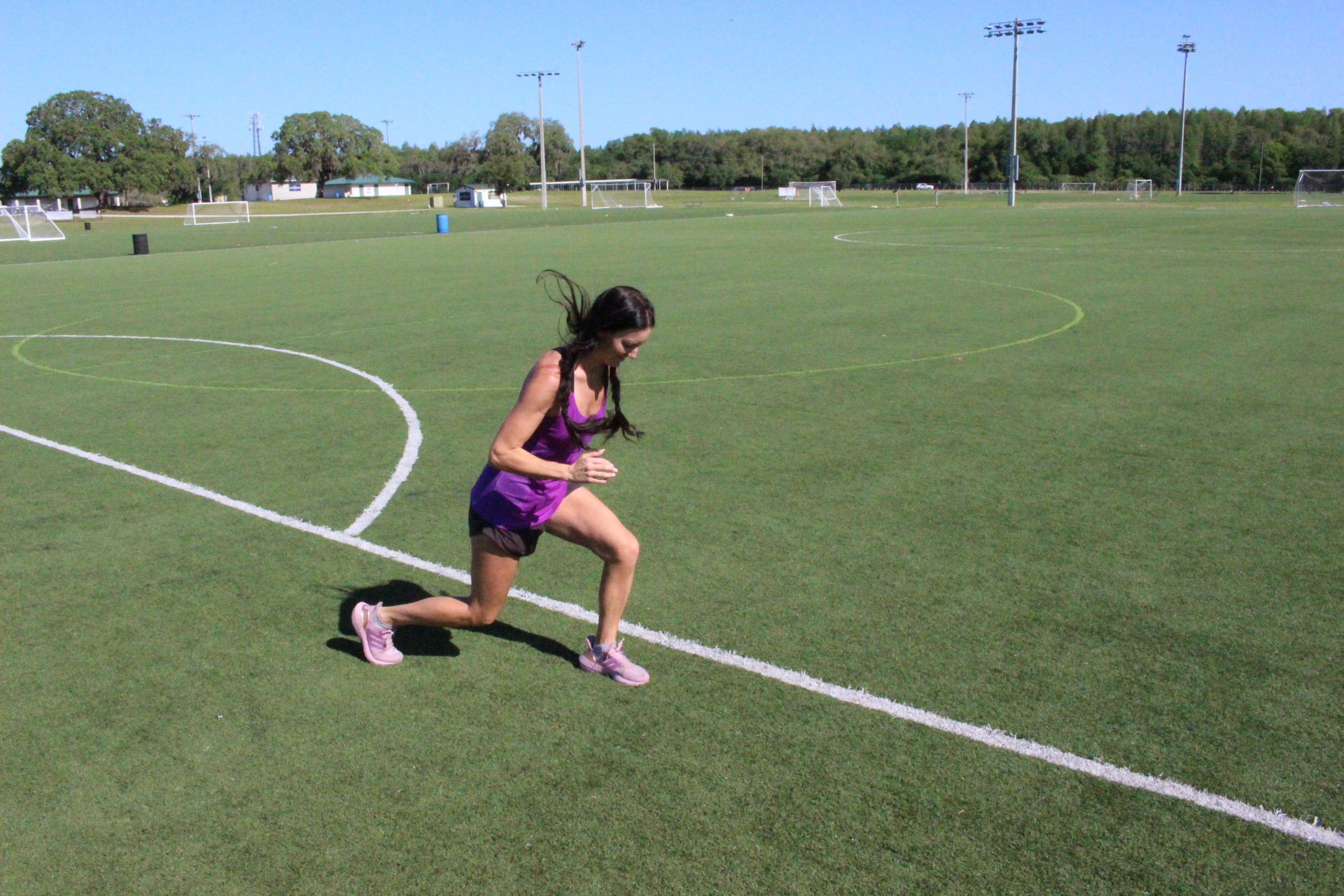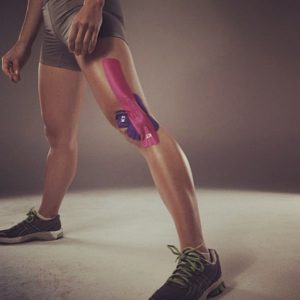
29 Sep Focus on Performance and Injury Reduction Follows
I didn’t sign up for strength training because I feared injury.
Back in the early 2000s, strength coaches didn’t market their programs with the phrase “injury prevention.” The jargon in their marketing focused on speed, strength, and conditioning, and becoming bigger, faster, and stronger.
I was sold.
These were the old-school strength coaches, who were some of the first guys in the field, paving the way for athletes to become more robust than ever before. These were the coaches who convinced a bunch of frail team sports athletes to get under the iron and get strong once and for all. These were the coaches who called out jogging as a terrible form of match day conditioning, and who pushed athletes under intense lung-burning runs that were more transferable to the game.

My strength coach in middle school, the former University of Maryland men’s lacrosse strength coach, molded us into unstoppable athletes. Our physical prowess soared after going through an incredible amount of duress in five days a week of off-season training at 8:00am sharp. Our workouts lasted about two hours, and this was the first time I was exposed to a proper strength and conditioning plan that encompassed a dynamic warm up, plyometrics, timed sprint drills, and high intensity conditioning.
Our mental resilience became unshakeable because the culture was nothing but discipline and grit. There was no room for complaining, entitlement, or laziness, not even one missed workout. If you missed a workout, the coaches jabbed at us and called us out in front of the others, while the other athletes chimed in and poked their fun as well. If you missed a workout, you felt a deep sense of shame from the rest of the group, and for good reason. There was no room for slacking and a lack of commitment.
Nowadays, this would be seen as harassment and offensive, which is sad. The accountability from the group made me tough as nails, and I’m still reaping the benefits today from this relentless, no excuses mindset. It taught me how to approach life with courage and boldness. Accountability from others and discipline within yourself are extremely valuable in life.

When picking out a strength program as a kid, injury reduction was not under my radar. During this time, I was training hard with my strength coach to become a well-rounded athlete who could outrun my opponents and hold my own in tackles, 50-50 balls, and one-on-ones. “Injury prevention” didn’t become a thing until later on, and I didn’t know what an ACL tear was until I was in high school.
Thank goodness, because the moment talks about ACL injuries began floating around my community, was the moment I saw my teammates and peers become terrified of getting hurt.
Their amplified fears caused them to become timid on the field. They played with anxiety and reluctance.
This caused a flood of youth athletes into the strength training space because “ACL prevention” became a billboard to reel in young girls.

Long before everyone hopped on the strength training bandwagon, I was already well into a performance program since 6th grade. I didn’t sign up with my strength coach in middle school with preventing injury as my goal, like everyone else did. You may think this sounds weird coming from a currently practicing performance coach like myself. However, in my childhood, my focus was to become a beast. I had no fear of injury, but I did have a fear of not performing at a high level and being the slowest one out there.
Injury didn’t scare me because I was more driven to become the fastest, strongest, most explosive soccer player on the pitch. Before I began performance training, I saw one of my teammates surpass all of us in her speed and conditioning levels. In awe of her physical capacity, I decided to ask her what she had changed. She told me about a brutal training camp she did every off-season to become better. After that, I begged my mom to take me because I wanted to improve, just like her. I was a fiery, competitive young female athlete. When I watched my teammate become better than me, my comparison didn’t crush me, but rather, it motivated me. I wanted to perform at a higher level. Performance first was my mentality.
This mindset is the opposite of what female athletes are being told today. At a young age, girls are told they’re more susceptible to ACL injury than boys. They’re not talked to about their amazing potential for speed, strength, and power during growth. At least, not in the initial conversation. They’re not talked to about how malleable they are to reap the benefits of performance training adaptations. They’re not talked to about how simple and easy it is to get physically better, with just a little discipline. Instead, the injury risk scare is what is hammered into their precarious brains as young as age 10. The problem is presented to them first, not the solution. What is the purpose of telling them this information? Why is the term ‘injury prevention’ plastered across programs and youth clubs? Is it for marketing? Is it to instill fear? Is it to sell something off emotion? Whatever the reason, it’s doing more harm than good.
We’ve failed our female athletes with this fear mongering message. At a young age, we tell them they’re broken and have issues with their anatomy and physiology. These are issues they can’t control. “It’s your wider hips” “it’s your menstrual cycle” or “it’s your Q angle.” Basically, we’ve told them they’re doomed and the chances they tear their ACL are high. Being exposed to these statements repeatedly instills a fear, even a hesitance when playing. It also provides them with no solutions on how they can help themselves and focus on what they can control. It leaves them feeling defeated and discouraged.
In my early years as a performance coach, I fell into the trap of talking to female athletes about their increased risk for ACL injuries. I wanted to sound educated on female anatomy. I was coming from a place of care (or so I thought) and wanted to present the problem. I didn’t do it to promote fear because I thought I was being genuine and helpful by educating athletes and parents. However, this isn’t the case for most coaches. Humans have a proclivity to use fear-based marketing because people are allured by programs based off emotion. Though this was not my intent, I’m still not proud, as a matter of fact, I’m extremely embarrassed that my website highlighted ‘injury prevention’ as the main message and selling point.
Now, I’ve stopped saying “injury prevention” to parents and players. Instead, I tell everyone the truth. First and foremost, athletes sign up with me to get fast and strong, to become powerful, to learn grit, and to learn discipline. Period. The last thing I want is for a young girl to sign up with me because she’s scared. I want her to be excited and feel empowered with training.
I then tell parents I’m not a magic genie who can 100% guarantee injury prevention. It’s impossible, and if you still see coaches promoting it, run the other way. Injuries can only be reduced, not prevented. Moreover, reducing injuries shouldn’t be the highlighted as the staple of a performance program. A performance program that is well-designed will build athletes up, and will keep injuries at a minimum as a nice byproduct. Coaches use it for marketing to lure new female athlete clients in, but right off the bat, this jargon is instilled in her mind that something’s wrong with her that needs to be fixed.
Anyone who guarantees “injury prevention”…please, run the other way.
Anyone who guarantees “injury prevention”… please, run the other way Share on XThe truth is health is not guaranteed. Of course, you can stack the odds in your favor by doing strength training, nourishing your body with the right nutrients, getting good sleep, implementing recovery workouts, and living your healthiest lifestyle, but injuries can still occur.
Sports are rough, and there are so many factors at play that injuries cannot fully be prevented. They can only be reduced.
Sports are rough, and there are so many factors
at play that injuries cannot fully be prevented.
They can only be reduced. Share on X
Even the strongest female athletes can still get hurt. Even the healthiest people can still get the cold or flu, disease, or cancer. Your best bet is to be the healthiest you can be, so your body can handle sport and life stressors better, and so you have a fighting chance to be less susceptible to injury and disease.
Words matter, and girls need to be empowered, not scared. “I don’t want to get hurt” is like saying “I don’t want to get fired from my job,” so you live in fear each day at work. Instead, how about you focus on getting the job done, being disciplined, doing what your boss says, performing at a high level, and doing more than what is expected? Your best bet is that – to not live in fear, and to live with tenacity in everything you do.
The focus must shift onto enhancing performance, and when improving speed and strength are the main pursuits, performance improves, confidence bolsters, character is built, and then injury reduction follows in the shadows.
It’s a win-win.
Performance first, then injury reduction follows.
Do you have deeper questions on training, recovery, and nutrition?
BOOK A ONE HOUR ZOOM PERFORMANCE CONSULT CALL WITH ME (for players, teams, and coaches) HERE

For more on training the youth female athlete, check out my guide book THE STRONG FEMALE ATHLETE HERE:
Amazon US
Amazon UK
Amazon Canada
“Let your eyes look directly forward, and your gaze be straight before you. Ponder the path of your feet; then all your ways will be sure.” Proverbs 4:25-26


No Comments